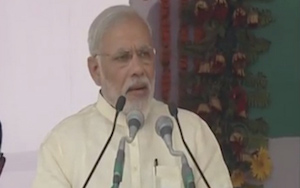Water in agriculture: Policy solutions to a critical problem
Agriculture continues to find an important place in policy discourse in India. Despite contributing less than 15% to the GDP of our country, the agriculture and allied sector still employs almost half of our workforce. Yet, despite its obvious importance, and despite multiple schemes and policies, irrigation remains a major constraint in the growth of Indian agriculture. With the El-Nino expected to intensify in July, our inadequate and inefficient irrigation network might adversely affect crop production this monsoon. Below are some of the main challenges we face.
Low coverage, large inter-regional disparity
Encourage water-user associations (WUAs) to manage resources better by treating water as an economic asset. Andhra Pradesh, Karnataka and Madhya Pradesh have been the pioneers in this process of Participatory Irrigation Management
Encourage micro-irrigation through capital subsidies on equipment. Most states are already doing it, led by Maharashtra, Andhra Pradesh and Karnataka. But only 10% of the potential is so far utilized. The new Pradhan Mantri Krishi Sinchai Yojana (PMKSY) officially approved recently by the Union Cabinet could give this a push.
Cultivate more drought-resistant crops and varieties. Pulses and oilseeds cultivation could be encouraged through focus on higher yields, greater price supports and higher import duties.
Prevent wastage of water due to free availability of electricity for tubewells etc. This is possible through the feeder segregation programme under the Deendayal Upadhyaya Gram Jyoti Yojana

